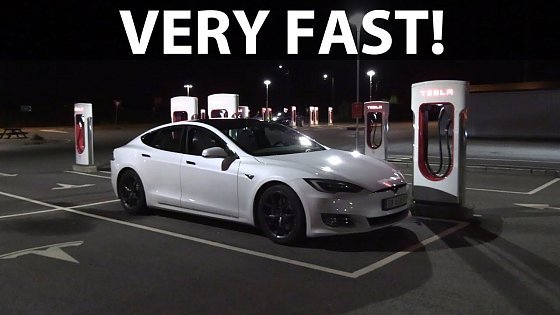Video Summary
-The Tesla Model 3 is bringing premium electric power to a new audience at a new price range, but with almost no direct rivals on the market.- If you want a premium pure electric saloon, the Model 3 is currently your only option.
- A used Tesla Model S is a persuasive reason for not buying a new Model 3.
- The Model S was a revolution, not just for electric cars, but for the entire executive car market with its range, performance, Tesla Supercharger network convenience, and road presence.
- Tesla changes prices and equipment more often than Elon is in the news, so it is best to check out the Tesla site for the latest information.
- The entry-level Model 3 costs well under £40,000, with finance packages from around £400 per month. The car features an official range of 254 miles, a 0 to 62 mph time of 5.3 seconds, and a great deal of equipment.
- You can find used versions of the Model S on the market. This one is a 75D, with a 75 kWh battery. Other used models feature batteries with 85 kWh, 90 kWh, and 100 kWh.
- A 75D Model S can be found for about £40,000, which provides a lot of car for that price.
- A downside of the early Model S is that the first cars to come to the UK are rear-wheel drive.
- The 75D has 25,000 miles on it, and the owner gets 230 miles to a charge; when it was brand new, it was doing 243 miles. With proper battery care, you can expect to lose about 13 miles of range every 25,000 miles.
- Every Model S has an 8-year, unlimited mile battery warranty, except the pre-2015 60 kWh models, which have a mileage limit.
- The new Model 3 has an official range of 254 miles. In real-world use, one can expect to see 230 miles, and with a lot of motorway miles, more like 200 miles. This range is very similar to a Model S 75D.
- Model 3s have a different battery warranty: eight years and 100,000 miles, with a performance guarantee. This means that if the range drops below 70% of what it was new in that 8-year period, the company will replace or refurbish it for free.
- Model 3s have a CCS port for access to most public rapid chargers, while the Model S requires a pricy CCS plug converter from Tesla to use third-party public rapid chargers.
- Both cars plug into slower type 2 public chargers and can fully charge in about 11 hours on a home 7kW charger. Home chargers can be installed for about £400 with a discounted program.
- Model S has more space and practicality compared to the Model 3. It features a proper limousine-like comfort.
- The Model 3 has a better interior finish, a bit more high quality than the Model S.
- That said, neither are up to the interior quality in conventional alternatives from Audi, BMW, or Mercedes.
- When it comes to easy driving, it ultimately comes down to lifestyle.
- The Model 3 has lighter and more accessible power and has lots of grip, being rear-wheel drive. As a result, it feels like one can use 100% of its potential.
- For UK roads, the Model 3 feels the best to use because the accessible power, the car feel, and nimbleness make it very appropriate.
- The Model 3 is better for UK roads, but ultimately, there's executive one-upmanship in the Model S, and it offers much more car for the money. All that said, the car overall, on balance, comes down to preferences in life style.







